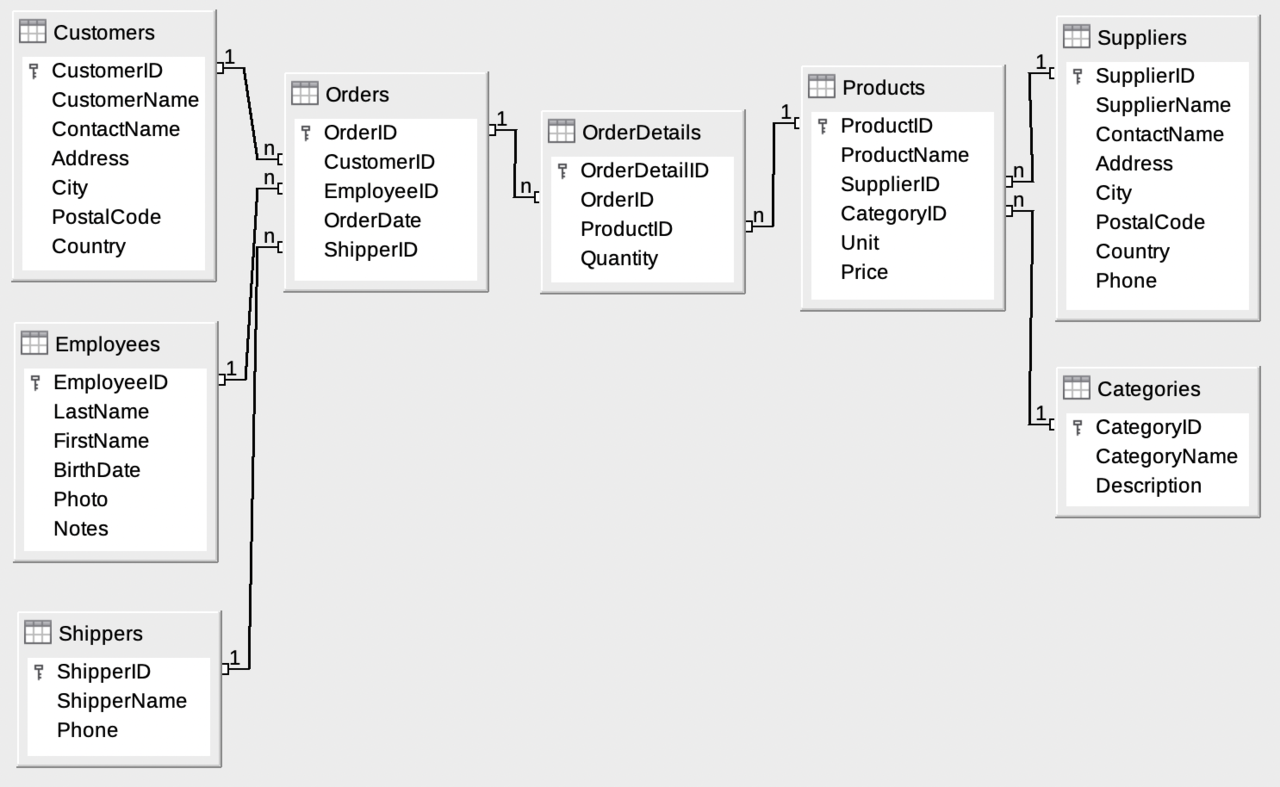What Is SQL?
- SQL is a standard language for accessing and manipulating databases.
- SQL is an ANSI (American National Standards Institute) standard.
Although SQL is an ANSI standard, there are many different versions of the SQL language. To be compliant with the ANSI standard, they all support at least the major commands in a similar manner, but most of the SQL databases also have their own proprietary extensions.
Database Tables
A database most often contains one or more tables. Each table is identified by a name (e.g.
customer or order).
Tables contain records (rows) with data.
Below is an example of a table called person:
| person_id | last_name | first_name | address | city |
|---|---|---|---|---|
| 1 | Hansen | Ola | Timoteivn 10 | Sandnes |
| 2 | Svendson | Tove | Borgvn 23 | Sandnes |
| 3 | Pettersen | Kari | Storgt 20 | Stavanger |
The table above contains three records (one for each person) and five columns (
person_id, last_name, first_name, address, and city).
SQL Statements
Most of the actions you need to perform on a database are done with SQL statements. The following SQL statement will select all the records in the
person table:
|
⇒
|
|
Demonstration
Below is an SQL test area from W3Schools, which uses the well-known Northwind sample database. The tables here are for read only because of the problem of embedding the scripts. For a fully working example, check this by using Chrome.
|
Result:
|
The Database includes:
|

|
The Database includes:
|